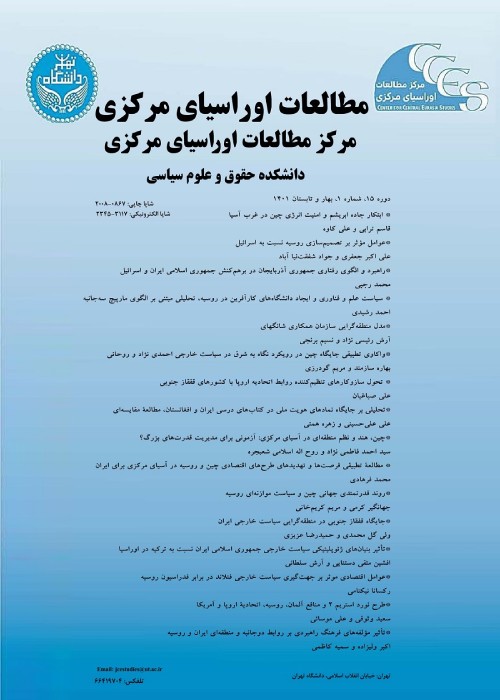Influencing Factors on Shaping Russia - Iraq Alignment (2011 - 2018)
The 1970s coincided with the expansion of Iraq-Soviet Union relations and Iraq was considered to be one of the most important Soviet Union allies in the Middle East. The collapse of the Soviet Union didn’t end the alliance between the two countries and they continued to cooperate during the 1990s. The invasion of Iraq by the United States and subsequent overthrow of the Baathist regime led to the termination of the Iraq- Russia alliance. Thus, we witnessed a minimal Russian role in post-Saddam Iraq from 2003 to 2011. With the beginning of the Arab uprisings and the spread of unrest to Syria and then Iraq, followed by the occupation of large parts of Iraq by ISIS, a new Iraqi-Russian alignment was formed. This article aims to examine the influential factors involving the formation and continuation of Iraq-Russia alignment from 2011 to 2018. Thus, our main question is: what are the main factors which influenced Russia-Iraq alignment from 2011 until 2018? The hypothesis is that the Arab uprisings (2011) and subsequent regional developments in the Middle East (especially the Syrian crisis) created internal and external threats against the existential security of the Iraqi central government; while the United States (during the Obama administration), as the most important and dominant ally of the Iraqi government, was reluctant to engage itself more in the Iraqi quagmire, Russia took the opportunity to play an active role in Iraq’s political scene. In other words, on the one hand, the Russian leaders’ perceptions of their position in the international system have changed and they assumed that at that time Russia was not as weak as it used to be in the 1990s and 2000s, and on the other, regional and international developments had provided an opportunity for Russia to re-align itself with Iraq. To examine our hypothesis, first we offer a conceptual and theoretical framework in which we follow Glen Snyder who redefines the concept of alignment as a broader concept and more fundamental than alliance. As such alignment is considered to be derived from particular interests of states and is constantly shifting as the patterns of power, resources, and thematic priorities of states, change. Further we use the neoclassical realism research program as our guide to examine factors influencing Iraq-Russia alignment. Neoclassical theoreticians examine states’ goals and behaviors in the international and regional environment by combining unit level and systemic level factors. According to neoclassical realism, international and regional opportunities, threats and states’ relative potencies are systemic level factors considered to be independent variables of this research program. These independent variables are interpreted through intervening variables (leaders’ perception of their position in international system and international and regional developments).Therefore, developments in Iraq and Obama’s Pivot to Asia policy are systemic level variables and Russian leaders’ perception of their position and power in international system is the intervening variable of this research. Finally by providing an overview of Russia-Iraq relations post World War II until 2011, we will discuss our independent variable. Therefore the 2011 Arab Uprising, the emergence of ISIS and changes in Iraq’s security environment will be mentioned followed by the assessment of the United States Pivot to Asia. The adoption of buck passing and offshore balancing strategies by the Obama administration encouraged states such as Russia which was willing to change the status quo, to enter into the international and regional developments that coincided with changes in Moscow’s leaders’ perception of their position in international system. In other words, the Russian leaders who witnessed the failure of US policies towards Afghanistan and Iraq during the late 2000’s, the 2007-2008 economic crisis, the emergence of powers such as China indicating a conversion from unipolar to multipolar system, and also the increase in oil prices, understood that the distribution of Russia’s relative capabilities in the international system has increased. As a result, they initiated some policies to change the position of Russia (especially in Central Asia and Eastern Europe) and utilize opportunities to transform it into a great balancing power in international system. Alignment with Iraq’s central government and Russia’s arms sales to this country in addition to intelligence cooperation, military training and investments in oil and gas sectors in Iraq indicated Russia’s effort to acquire a foothold and reach maximum influence in the important and strategic land of Mesopotamia.
- حق عضویت دریافتی صرف حمایت از نشریات عضو و نگهداری، تکمیل و توسعه مگیران میشود.
- پرداخت حق اشتراک و دانلود مقالات اجازه بازنشر آن در سایر رسانههای چاپی و دیجیتال را به کاربر نمیدهد.


